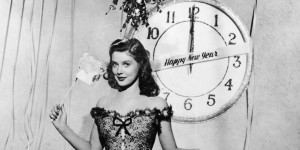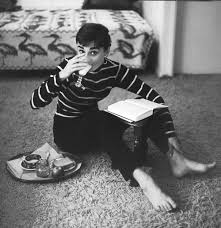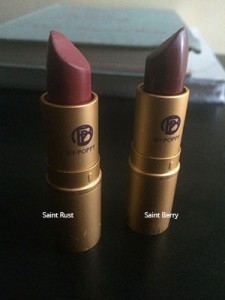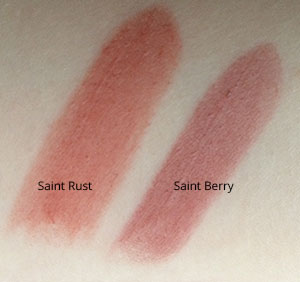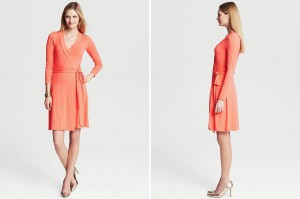This post uses affiliate links.
One of the chapters in the workbook is about something I call “The Three Levels of Dress.” The basic premise is that there are three general levels of formality, and it’s important to know how to dress true to your style for each. You don’t stop dressing Theatrical Romantic because you’re in casual wear, and you don’t skip out on formalwear because you have a Natural base.
I’ll do more posts in the future talking about specific types and what the different levels look like for them, but today I’m going to focus on my own type and one way to approach casual dress if you’re also a Flamboyant Gamine.
While Flamboyant Gamine isn’t exactly challenging for casual wear, since as a type, it has low level of formality in general, it still can be a bit intimidating when you look at Pinterest. It can seem a little out there, or like you’d need the body of an 18-year-old runway model to pull it off.
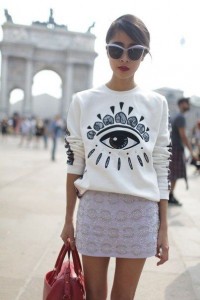
(Source)
Typical FG Pinterest example… No one needs to see that much of my legs!
One approach that I really like, and something I do in my own life, is mainly getting my casual clothes from two places: the “basics” section of stores like H&M, and athletic brands. The latter is something I’ve done for a long time, before I had even heard of Kibbe.
Now, if you’re picturing the Real Housewives of Orange County going out to lunch in their gym gear, that’s not what I’m talking about. Athletic brands are actually a great source of clothes that tick essential FG boxes: asymmetry, boxiness, bolder choices in color and pattern than most “street” clothes, and pieces that can provide the narrow base FG is built on. Put in a different context, they’ll look like more interesting versions of a sweatshirt, t-shirt, leggings, whatever, rather than you looking you were too lazy to put on real clothes.
I got a little end-of-year bonus yesterday, and since I’ve found myself with only two sweaters to my name, I decided to invest in some sweatshirts.
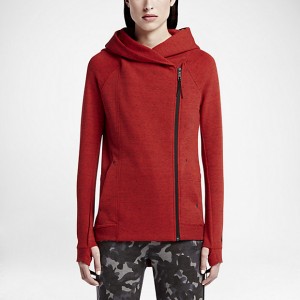
Nike Tech Fleece Cape. I’m not sure why this is called a “cape,” since it’s really a hoodie/jacket. Number one for me here is the asymmetry, obviously. But I also love how the hood is oversized, and since this hoodie long in the back, it means I can wear it with leggings. Definitely something I can wear all year long–as a sweater layer in the winter, over another sweater when it’s really cold, and as a jacket in the spring/summer.
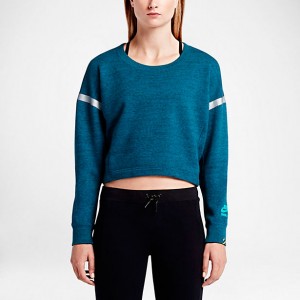
T/F Cropped Crew. Here we encounter one of the problems with every single model being FN 🙂 I promise you that this looks boxy on me! Cropped, boxy sweatshirt + bodycon tunic + leggings/skinny jeans are one of my uniforms, and the old sweatshirts I have, a gray leopard-print one and one in the elusive DA yellow, are from Forever 21 and thus can’t really be worn and washed for more than a season. I hope that this sweatshirt–mine has black accents, not silver–will last a little longer. Plus it was on sale.
Athletic wear is also a great place to find pieces you need to put together FG’s narrow base layer.
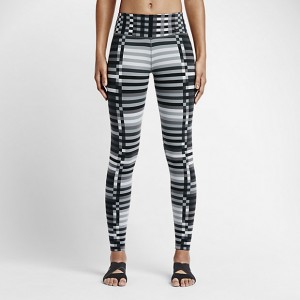
These Legendary Engineered Lattice Tights could be paired with an oversized, boxy sweater.
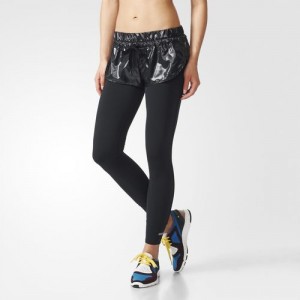
Stella McCartney’s Adidas line is one that I shop from when I can afford it, and the Essentials Short Tights would look very cute with a boxy t-shirt or sweatshirt.
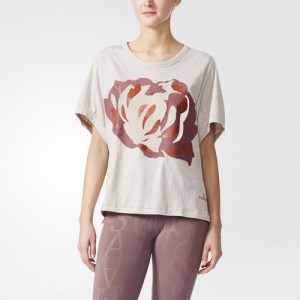
The color selection is also more varied than we usually find in these styles. If you’re a soft season FG, it can be hard to find clothes… but this Running Essentials Graphic Tee would definitely work.
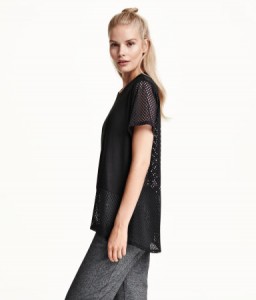
Brands like Nike and Adidas are expensive, and I can’t imagine buying these clothes just to sweat in them. When I buy clothes for exercise, I always go to H&M. But their clothes are actually just as cute, and while I haven’t gone to the gym in like a year, the clothes I bought to go to the gym are things I wear on a weekly basis. This Sports Top I picture paired with skinny jeans in a neon color and a statement necklace, or a tight miniskirt.
The athletic wear department is an easy place for FGs to find their asymmetrical, cropped/boxy + narrow silhouette in a variety of colors. Plus it’s super comfortable. If you mix it up with non-athletic clothing, it will definitely not look like you were too lazy to change after the gym.
Is there an unexpected source of clothing that is a goldmine for your type? How do you do casual?
————————————————————————————————–
Know your type in several systems but having trouble putting it all together? My workbook can help.
